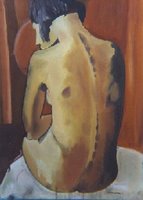
The big political debate in Spain right now (if we leave aside the smoking ban, and the LOE protest, and whether Zapatero is or is not, as his opponent Mariano Rajoy calls him, a "solemn idiot"), is over the Catalan Statute. If passed, the statute will grant significantly more autonomy to the already fairly autonomous region of Catalunya. There are many points of contestation—financing, the judiciary, whether Zapatero or Maragall comes first in official protocol—but the great sticking point seems to be over the word "nation." The Catalans consider themselves to be one; many other Spaniards aren't so sure.
Zapatero has successfully persuaded parliament to agree to discuss the proposal, but it's anyone's guess what will happen next. The Catalan parties are unanimous in their support for the "nation" clause, ZP has insisted that it cannot stand, and the PP is making loud pronouncements about how both the Catalans and the Socialists are trying to destroy Spain.
In the meantime, some opponents of the Statute have mounted a boycott of all Catalan products, which include mineral water, and the white sausage called butifarra, and a bunch of delicious cheeses, but more than anything else, means the sparkling wine called cava . Cava producers are already lamenting the drop in sales.
So choose tonight's champagne wisely. Have I mentioned that Freixenet, a fine, inexpensive cava, is readily available in the United States?
New Year's Eve, Catalan Statute, Zapatero, cava









